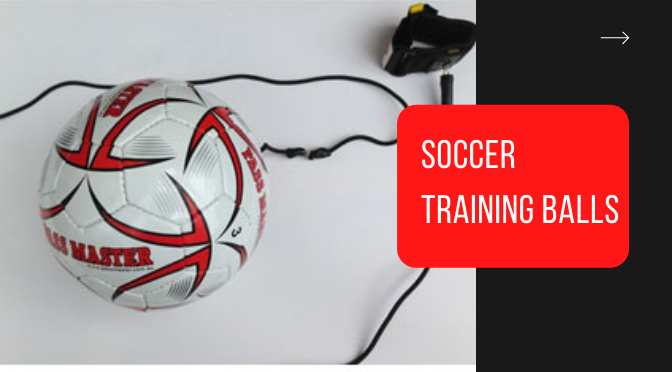When it comes to choosing soccer training balls, there are a lot of features to look for and a lot of factors to consider. Remember, the stint your child has to excel as a soccer player starts with the training. Thus, while you will have to put a lot of emphasis on the coach and the training modules, you will have to be equally careful while looking for the right soccer training ball.
Well, choosing soccer balls for training might sound simple, but it’s easier said than done. That’s because there are so many types of balls available in the market and all of them come with various materials, and they are available in various sizes and types. Hence, picking up the right training ball can very well be a daunting task. That’s why we have on this page come up with a segregated discussion of the different features of these balls.
The most common varieties of soccer balls that you get to see in the market are match balls and some specific types of training balls. Match balls, as the name suggests are the ones that are used in matches or in other words, gameplay. Hence, they are prepared in accordance with the official regulations including size and weight. However, when it comes to discussing the training balls things are different and that is what we are going to discuss.
The Size
These training balls are meant to be used in training and practices as well as for recreational use. Hence, they differ in size and weight in accordance with the age of the trainees they are meant for. So you will find these training balls coming in various sizes. Take for instance, That Training Ball. We have in our stock, training balls of various sizes, like Sizes 3, 4, 5….and so on. Each of these balls is meant for a particular age group. That’s why, when it comes to picking up an appropriate ball, you need to select the right size depending upon your ward’s age.
The Materials
Technically speaking, the structure of the soccer balls can be divided into two parts — the bladder and the casing. While the bladder is the capsule or the compartment inside the ball that holds back the air to the ball its shape and agility, the casing, on the other hand, is the outer visible layer of the ball that gives the look and feel and the recognisable shape to the ball. Now, this outer panel can be made up of various grades of different materials.
The casing:
The casing of the modern soccer balls, including the training balls, are either made up of polyvinyl carbonate or PVC, polyurethane or PU, or a combination of both of them. And at times they also come up with synthetic leather. The balls that are made up of PU are higher in terms of quality, softer and lighter and are the best in Australia for soccer sidekick practice. They are more responsive than their PVC counterparts that are a bit harder but are more durable. Synthetic balls, on the other hand, are the best in terms of behaviour with increased control.
They often come with glossy finishes these days as this help to keep water damage at bay. But since it’s all about choosing practice balls, you will also have to consider the bungee cord that the balls come with. This helps in practising in the backyard, without the ball getting to the neighbour’s premises and breaking things. Generally, these cords are adjustable.
Thus, you need to call us to know further details about these training balls. Dial 02 93993575 (Telephone) or 0490 388 954 (Mobile) from Australia. Dial 0061 490388954 (Mobile) or 0061 293993575 (Telephone) while calling from abroad.








